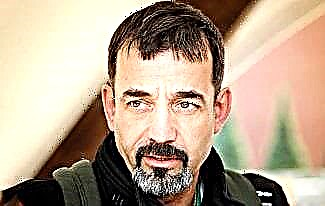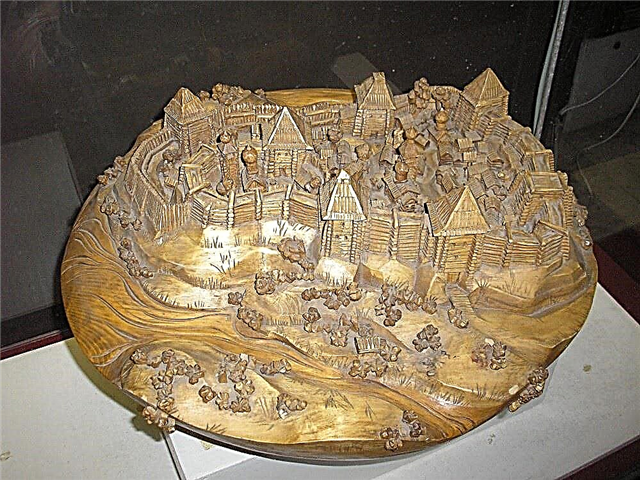Nature reserves began to appear en masse in the twentieth century, when people gradually began to realize what damage they cause to nature. It is characteristic that the first reserves appeared in areas of little use for regular human activity. The territory of the Yellowstone Reserve in the USA was of interest only to poachers. In Switzerland, the first reserve was also opened on almost waste land. The bottom line is simple - all suitable land belonged to someone. And the nature conservation measures at them consisted in the fact that any activity was allowed only with the consent of the owner.
The gradual awareness of environmental problems led to the widespread expansion of reserves. In addition, it turned out that tourism in reserves can generate income comparable to mining. The same Yellowstone National Park is visited by more than 3 million tourists a year. Thus, nature reserves not only preserve nature, but also allow people to get to know it directly.
1. It is believed that the world's first reserve was established on the island of Sri Lanka back in the III millennium BC. e. However, it can hardly be considered that it was a nature reserve in our understanding of this concept. Most likely, King Devanampiyatissa, by a special law, simply forbade his subjects to appear on some parts of the island, keeping them for himself or the Sri Lankan nobility.
2. The first official nature reserve in the world was Yellowstone National Park in the United States. It was founded in 1872. Poaching in Yellowstone Park had to be fought by regular army units. They managed to establish a relative order only at the beginning of the twentieth century.

3. Barguzinsky became the first reserve in Russia. It is located in Buryatia and was founded on January 11, 1917. The purpose of establishing the reserve was to increase the sable population. At present, the Barguzinsky reserve occupies 359,000 hectares of land and 15,000 hectares of the surface of Lake Baikal.

4. Russia in terms of the organization of reserves is not too far behind Europe. The first nature reserve on the continent appeared in 1914 in Switzerland. It is noteworthy that the reserve was created on a completely depleted area. Before the industrial revolution, the Alps, in which the Swiss national park is located, were completely covered with forest. A century after the foundation of the reserve, forests occupy only a quarter of its area.
5. The largest in Russia is the Great Arctic Reserve, under which an area of 41.7 thousand square meters is allotted. km in the north of the Krasnoyarsk Territory (the Taimyr Peninsula and the adjacent water area of the Kara Sea with islands). There are 63 countries with a smaller territory in the world. On Cape Chelyuskin, which is part of the reserve, snow lies 300 days a year. Nevertheless, 162 species of plants, 18 species of mammals and 124 species of birds were found on the territory of the reserve.

6. The smallest nature reserve in Russia is located in the Lipetsk region. N is called Galichya Mountain and covers an area of only 2.3 square meters. km. The Galichya Gora reserve is known primarily for its unique vegetation (700 species).
7. The largest nature reserve in the world is Papahanaumokuakea. This is 1.5 million km of sea area in the Pacific Ocean around the Hawaiian Islands. Until 2017, the largest was the North Greenland Nature Reserve, but then the US government increased the area of Papahanaumokuakea by about four times. The unusual name is a combination of the names of the creator goddess revered in the Hawaiian Islands and her husband.
8. The shores of Lake Baikal are almost completely surrounded by nature reserves. The lake is adjacent to the Baikalsky, Baikal-Lensky and Barguzinsky reserves.
9. In the Kronotsky Nature Reserve in Kamchatka, there is the Valley of Geysers - the only place where geysers hit in the mainland of Eurasia. The area of the Valley of Geysers is several times larger than the Icelandic geyser fields.

10. Reserves occupy 2% of the entire territory of Russia - 343.7 thousand. The area of seven nature protection zones exceeds 10 thousand km.
11. Since 1997, on January 11, Russia has celebrated the Day of Reserves and National Parks. It is timed to the anniversary of the opening of the first reserve in Russia. The event was initiated by the World Wildlife Fund and the Wildlife Conservation Center.
12. The concepts of “reserve” and “national park” are very close, but not identical. To put it simply, everything is stricter in the reserve - tourists are allowed only to certain territories, and economic activity is completely prohibited. In national parks, the rules are more liberal. In Russia and the countries of the former USSR, nature reserves prevail, in the rest of the world they do not make a difference and call everything national parks.
13. There are also museum-reserves - complexes in which, in addition to nature, objects of historical heritage are also protected. Usually these are places associated either with major historical events, or with the life and work of prominent people.
14. Many people know that the filming of the Lord of the Rings trilogy took place in New Zealand. More specifically, Mordor is located in the Tongariro reserve.

15. There are nature reserves or national parks in 120 countries of the world. Their total number exceeds 150.









